Donald J. Graves (1933–2024)
Donald J. Graves died June 21 in Woodbury, Minnesota, at the age of 90. He was a member of the American Society for Biochemistry and Molecular Biology for almost 60 years, a former member of the Journal of Biological Chemistry editorial board, a longtime researcher and a respected educator. He was also our father.
Don was born in Evanston, Illinois, in 1933 to a first-generation family of immigrants from Poland and Lithuania. After completing high school in Chicago, he studied chemistry at the University of Illinois at Urbana–Champaign, UIUC, where he obtained his BS degree in 1955.

“They could not give me enough chemistry,” he told us.
Our father knew nothing about the world of research until he joined Joseph Larner’s lab at UIUC as an undergraduate, where he was introduced to the field of glycogen metabolism. Although his parents expected him to remain in Chicago and use his degree for a factory job, a chemistry professor named Carl Shipp Marvel suggested he go see the “big ice cream cone in the sky” — Mt. Rainier — and work for Edwin G. Krebs at the University of Washington.
A Nobel laboratory
Don was fortunate to study with both Krebs and Edmond H. Fischer in the early days of their careers at the UW. During this time, the first protein kinase, phosphorylase kinase, and the importance of protein phosphorylation were discovered. Don published three key papers in the Journal of Biological Chemistry with Krebs and Fischer, describing the specificity of protein phosphorylation and dephosphorylation. These studies were essential to establishing the concept of specificity and reversibility of phosphorylation as a mechanism of regulation.
At the time, the lab was small, and during cigarette breaks in the hallway (yes, they smoked indoors then), they planned out each new experiment for the next day. This was an incredibly exciting time to be a graduate student. Krebs and Fischer were awarded the Nobel Prize in physiology or medicine for their pioneering work on protein phosphorylation, and Krebs highlighted our father’s important contributions to this work in his Nobel speech in 1992.
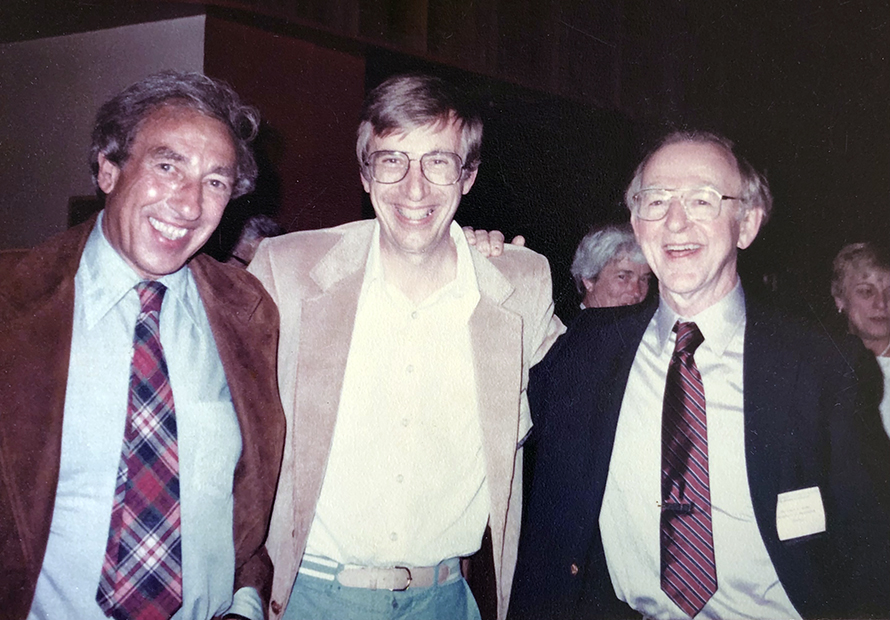
Don did not spend all his time in the lab. One day, he went to a dance at the Newman Club. He wrote later in a letter to Marge, our mother, “I saw you standing by the piano, how pretty you looked, and what a nice dancer I found.”
They were married in less than a year, which he later said was because “We were in love, so why not get married?” And also, “I wanted to get back to the lab and get some work done.”
Although research was his first love, Marge was the love of his life, a joyous union that lasted 66 years and produced five children — the two of us, our brothers Brian and Stephen, and our sister, Ann — as well as many grandchildren and great-grandchildren.
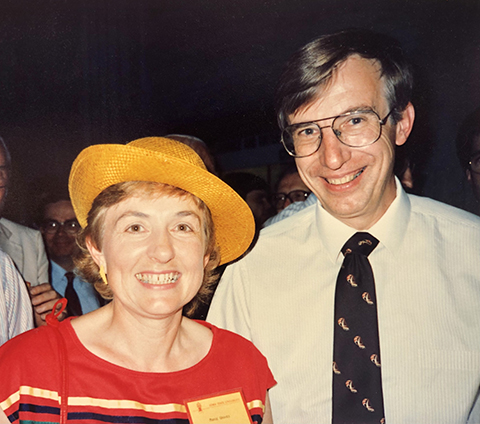
Another Nobel laboratory
After Don completed his Ph.D. at the UW, he and Marge moved to the University of Minnesota where he performed postdoctoral studies with Paul Boyer. At the time, Boyer’s lab was focused on understanding the enzymatic mechanism of adenosine triphosphate synthase. Don contributed to his lab with publications on the mechanistic properties of glutamine synthetase and posttranslational modification by canavanine.
Boyer later shared the Nobel Prize in chemistry with John E. Walker and Jens Skou in 1997 for his studies on the ATPase.
Iowa State days
Our father started his research laboratory in the newly formed Department of Biochemistry at Iowa State University. He returned to his interests in the regulation of glycogen phosphorylase by protein phosphorylation and oligomerization, and his first paper as an independent investigator was published in JBC. This area of research became a life-long interest, and he published over 140 papers on this topic. He made numerous important contributions to the specificity of protein phosphorylation and its unique properties as a posttranslational modification.
After a sabbatical with Krebs in 1971, Don published a highly-cited JBC paper with Bruce Kemp and Krebs that defined the essential primary sequence recognition of the cAMP-dependent protein kinase. This important paper set the stage for numerous other studies defining protein kinase specificity.
The Graves lab also made major contributions to understanding the structure/function determinants of phosphorylase activity, the substrate specificity of phosphorylase kinase, its regulation by pyridoxal phosphate and the delta subunit, calmodulin. Don also contributed extensively to our knowledge of kinase autophosphorylation, calcineurin regulation and the role of other post-translational modifications such as mono-ADP ribosylation. Throughout his career, he continued to apply his love of organic chemistry to better understand enzyme function and regulation.

Never a dull moment …
Don’s greatest joy was working with the multitude of talented undergraduate and graduate students and postdocs who came through his lab. Known for his love of light-hearted teasing, he created a fun and vibrant lab environment. There were lab hijinks, betting sodas on experiments and lots of contests including cork ring toss and ping-pong.
Through it all, he had an infectious passion for research. This included projects to study phosphorylase from less well-studied organisms such as the lobster — which was very popular with the students; it’s rumored that leftover claws were boiled and eaten in the lab.
Lab parties included hypercompetitive softball games with the 16-inch “Chicago Clincher” softball, a trip to the horse races and many outings on nearby Iowa lakes in a wooden sailboat he built and christened “De Colores.” Students often remarked, “It was fortunate I knew how to swim.” Survivors were treated to our parents’ hospitality which included generous amounts of food and beer. Many of Don’s trainees went on to highly successful careers in academia and industry and remained lifelong friends.
Don’s enthusiasm for science also influenced the two of us. We both pursued careers in biochemistry after working in his lab.
Lee distinctly remembers doing phosphorylase assays with Don, using mouth pipettes, Fiske-Subbarow reagent and the Klett meter. It was always a competition to see who could pipette 0.2 milliliters more accurately on a 20-second time interval. Paul remembers the first time he succeeded at purifying phosphorylase (after many failures) and feeling on top of the world.
Later in all our careers, conferences like the annual ASBMB meeting became a rare opportunity to get together and talk science with each other and many of the great friends Don had acquired over the years. We are both extremely grateful to have had the opportunity to learn the love of science from our father.
Giving back
While Don loved research, he was equally passionate about teaching and mentoring, and said he wanted to “repay the favor” he was shown as an undergraduate and foster the next generation of biochemists.
Lian Li, now a professor at Emory University, is a former student. “His lecture was not just about providing knowledge but about igniting curiosity,” Li said. “Don had a remarkable ability to make even the most complex concept accessible and exciting. His enthusiasm inspired many of us to pursue careers in science.”
In 2000, Graves received the Margaret Ellen White Award for mentoring graduate students.
Awards
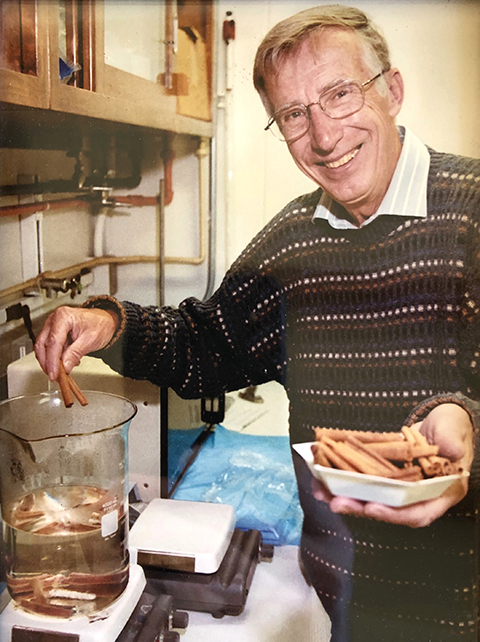
Our father was the first Iowa State faculty member to receive the prestigious Research Career Development Award from the National Institutes of Health. He was the Mid-America States Honor Lecturer from 1982 to 1983 and chair of the Iowa State biochemistry department from 1982 to 1985. In 1993 he became a Charles F. Curtiss Distinguished Professor, a chair named for a noted early 20th-century dean of agriculture.
Throughout his career, Don was continuously funded by the NIH including a grant from the National Institute of General Medical Sciences that he held for over 27 years. He contributed widely to the profession including two terms as a JBC editorial board member. He joined the ASBMB in 1965 and was a member for the rest of his life.
Santa Barbara days
Over his career, Don traveled extensively and built a cadre of colleagues and friends across the globe — in Japan, Taiwan, Canada, Israel, England, Poland and the former Soviet Union. He was well-respected internationally for his work on protein phosphorylation and enzyme regulation.
After retiring from ISU, he and Marge moved to Santa Barbara where he worked as a professor emeritus at the University of California, Santa Barbara. It was there that he made the important discovery, working in collaboration with former student Richard Anderson, that cinnamon contained natural insulin mimetic compounds known as proanthocyanidins. Don was passionate about the potential application of these natural compounds for the treatment of diabetes or Alzheimer’s disease. Even in his final years, He was eager to discuss new experiments about how cinnamon compounds could be used to help others.
Remembrances
"Every step in my professional path can ultimately be traced back to the chance Don gave me, in the second month of my freshman year at Iowa State, and the good stuff we did together."
- Robert Sealock, professor emeritus, UNC Chapel Hill
"Your Dad had a big influence on me as I was training at Iowa State; he was truly one of the best people I knew there. He was such a positive force in this world and such a likeable man. He was always smiling, and would always take the time to greet me, ask how I was doing, and give encouragement."
- Rory Fisher, professor, University of Iowa
"I consider myself extremely lucky to have had Don as my major professor, guiding me through my Ph.D. program. It was with Don that I learned what scientific research was all about, and I discovered the excitement of doing research. I also remember sitting in Don's office learning how to write a complete research paper, sentence after sentence, figure after figure, one revision after another. Tons of paper was used, and many cans of Coke consumed. It was hard work for me, and I did not enjoy it, but that was how I learned to write research papers."
- Jerry Wang, retired professor, University of Calgary
"I am eternally grateful to Don for allowing me to become a part of his extended laboratory family. As a clueless undergraduate student back at ISU, Don opened the doors to his laboratory and allowed me to learn what scientific research is all about. The guidance and knowledge that I learned during my three years in his laboratory clearly motivated me to attend graduate school and launch my own career in science."
- Chris Gable, vice president of biology, Nodthera
“My memories of Don go back a long way; he has always, in my mind, been a critical link to the early days of protein phosphorylation when kinases and phosphatases were just being discovered in Seattle. These historical years laid the foundation for all that I subsequently did when I entered this field as an outsider — not from the Fischer/Krebs lineage! He was always such a passionate biochemist, and we interacted in a variety of ways over the years. I was blessed to have been a friend.
- Susan Taylor, distinguished professor of chemistry and biochemistry, University of California, San Diego
“As a graduate student in Don’s lab in the early ‘70s, I was constantly made aware of the concept of family. Not only did Don’s children frequently perform a variety of projects and work in his lab, members of our lab group were likewise made to feel like a part of Don and Marge’s active family. It wasn’t at all difficult to sense that Don’s idea of family was not localized by time nor place but stretched out to include every person who had ever worked in his lab, as well as all those researchers elsewhere working in our field. Don showed excitement over and appreciation of their work, and I never thought of him seeing them as competitors, but instead as fellow members of a large, unified family. In fact, I never heard Don say anything disrespectful about the work of another. Being exposed to this behavior, this attitude, this philosophy was invaluable to a young graduate student trying to figure out how a respected scientist should act.
- Gerald M. Carlson, former chair of biochemistry and molecular biology, now professor emeritus, Kansas University Medical Center
Don Graves research scholarships
It was Don’s wish to promote undergraduate research as part of his legacy. If you would like to contribute to the Donald J. Graves Undergraduate Research Scholarship at Iowa State, click here.
Enjoy reading ASBMB Today?
Become a member to receive the print edition four times a year and the digital edition monthly.
Learn moreGet the latest from ASBMB Today
Enter your email address, and we’ll send you a weekly email with recent articles, interviews and more.
Latest in People
People highlights or most popular articles
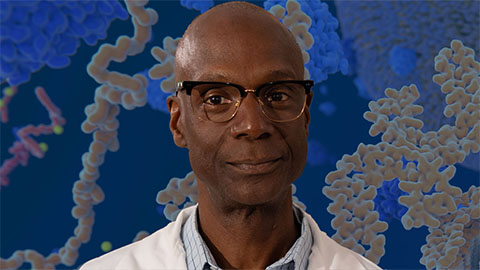
Phosphatases and pupils: A dual legacy
Yale professor Anton Bennett explores how protein tyrosine phosphatases shape disease, while building a legacy of mentorship that expands opportunity and fuels discovery in biochemistry and molecular biology.
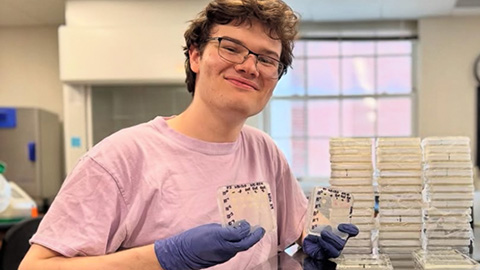
Summer research spotlight
The 2025 Undergraduate Research Award recipients share results and insights from their lab experiences.
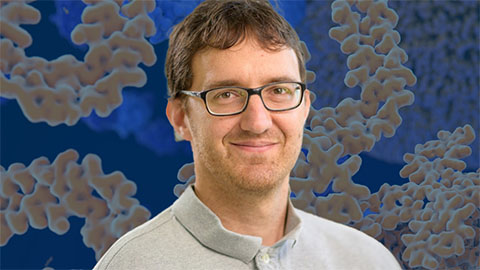
Truttmann recognized for cell stress research
He was honored by the Cell Stress Society International for his work on heat shock protein 70.

Understanding the roles of extracellular matrix and vesicles in valvular disease
MOSAIC scholar Cassandra Clift uses mass spectrometry and multiomics to study cardiovascular calcification and collagen dysregulation, bridging her background in bioengineering and biology to investigate extracellular vesicles and heart disease.
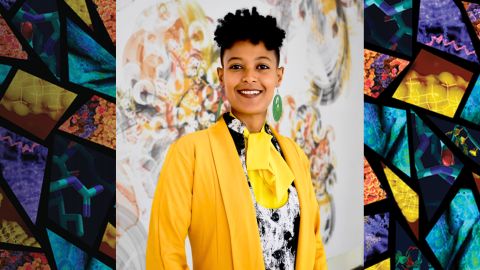
Learning, leading and lifting others
Tigist Tamir’s journey from aspiring astronaut in Ethiopia to cancer researcher at the University of North Carolina highlights the power of mentorship, persistence and curiosity in shaping a scientific career focused on discovery and equity.
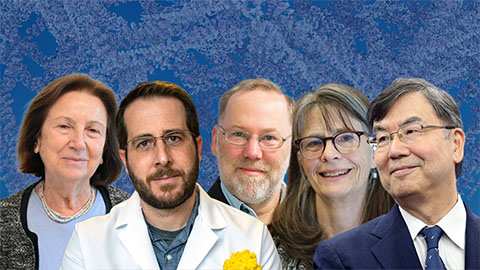
Biochemists and molecular biologists sweep major 2025 honors
Recent Nobel, MacArthur and Kimberly Prize honorees highlight the power of biochemistry and molecular biology to drive discovery, including immune tolerance, vaccine design and metabolic disease, and to advance medicine and improve human health.

